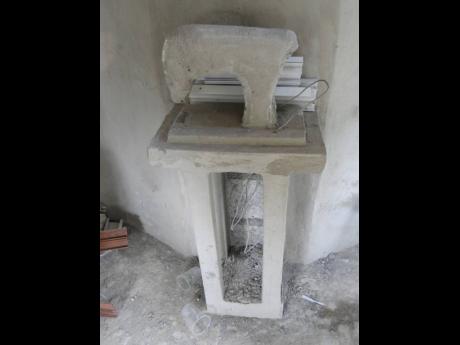Make our cemeteries attractions
Over the last decades, parishioners and visitors to the parish of St Mary have been gawking at the very interesting tombs in the Annotto Bay Cemetery in the said parish. While some have been criticised for being over the top, others are regarded as fitting for the departed.
But the ‘extravagant’ tombs in that graveyard are nothing compared to some massive structures the world over. Some are tourist attractions that people travel across seas and oceans to see. The most of famous of them all is the Taj Mahal, located on the south bank of the Yamuna River in the Indian city of Agra.
The ivory-white marble mausoleum was constructed on the instructions of the Mughal emperor, Shah Jahan, starting in 1632, to house the tomb of his favourite wife, Mumtaz Mahal. Shah Jahan himself is buried there. Other famous tombs include the mausoleum of the first Qin Emperor in China, the Pyramid of Giza in Egypt, Lenin’s Mausoleum in Russia, Castel Sant Angelo in Italy, the Church of the Holy Sepulchre in Israel, the tomb of Cyrus in Iran, and Shah-i-Zinda in Uzbekistan.
In the Annotto Bay Cemetery, the most notable are the ‘Diamond Castle’, the ‘aeroplane in the hangar’, the tomb of the young shirtless man, a bike, a pair of football boots and a football, the two-storey house with the Escalade in the garage, and the ‘yard’ with the chain-link fence and gate in which there is a multistorey house with LED lighting.
But the one that might overshadow the grandeur of the others, and whose construction was abruptly halted by the St Mary Municipal Corporation earlier this year, is an over seven-foot-high structure that is perched on an embankment near the main road leading into the town. Costing about $1.4 million, according to media stories, it is supposed to be the eternal home for two sisters, one a seamstress, the other a chef.
But before it was completed, the municipal corporation intervened and stopped the construction until further notice. Hospitality Jamaica was told that the builders had breached the agreement to build at certain specifics, and, as such, it might be endangering the lives of users of the place or compromising the stability of other graves. It has a foundation issue, and is also blocking the view.
When Hospitality Jamaica visited recently, there were pieces of material intended to be used in the construction leaning against the walls. The ‘house’ and the things therein were not painted. There was a life-size concrete settee, perhaps too tough for the spirits, an unfinished concrete sewing machine, and an open book on a concrete table beside the settee.
In the newer section of the cemetery, where the ‘big house’ looms, these opulent monuments, however, are juxtaposed against less flattering ones. Many are just a piece of concrete lab on which mourners trample whenever there are burials nearby. Absolutely no regard for the dead.
The other practice is to mix the mortar on these slabs and leave the unused portion thereon. The headstones of other tombs are splashed with the said mortar, which was not cleaned off. And garbage, especially plastic bottles and cups, discarded by mourners, are all over the place.
The Annotto Bay Cemetery is not the only one in Jamaica that is populated with must-see tombs. These ostentatious final resting places are all across the country. We could perhaps develop a culture of making our cemeteries attractions, like the ones earlier. Even the dearly, and not-so-dearly, departed want some attention, and their stories told.

